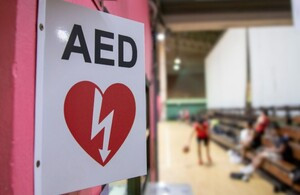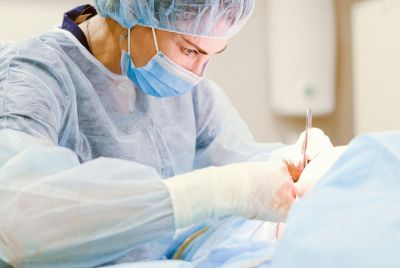Over 5,000 defibrillators installed in British secondary schools with £19 million government funding
Last year the government decided to supply defibrillators in 18,000 state-funded schools so that they have at least one device to save lives and increase the survival rate in sudden cardiac arrests.

Secondary schools in England got a major boost as the UK government fulfilled its commitment to supply life-saving equipment.
As part of the program, the UK government pledged to make arrangements for life-saving equipment like defibrillators in state-funded schools by the end of this academic year. Now, the government has confirmed that 5,435 defibrillators have been installed in 3,066 secondary schools.
The defibrillators were installed with government funding of £19 million. Both the students and teachers of these schools can avail of this facility.
Why is this crucial?
Defibrillators are electronic devices that send an electric shock to the heart in case of cardiac arrest or heart attack. It's essential life-saving equipment to restore the heartbeat. These types of equipment are effective in saving lives most of the time as there is a 50 to 70 per cent chance of survival when they are used three to five minutes before a heart attack.
According to the British Heart Foundation, every year 500 people in the UK are affected by sudden cardiac arrest and it can happen at any time. For this reason, they have advocated installing more defibrillators in public spaces like schools in the UK.
At present, 10,000 or more defibrillators are available in public spaces like gyms, supermarkets, offices and schools. Without these, people have to rely on CPR and have to get to the nearest hospitals which reduces the survival rate considerably.
Secondary schools are more risk-prone
Defibrillators became a necessary requirement in state schools in October 2020 in order to tackle cardiac arrest issues among students, teachers and other staff in school. Based on that directive, all schools needed to have at least one defibrillator in place. In July last year, the government pledged to install defibrillators in all schools by the end of the academic year.
The government prioritised secondary schools over other schools as they are more prone to cardiac arrest due to the higher age threshold. However, the government has already rolled out the facility in other schools like primary and special schools and they are likely to be installed by the time the summer term ends.
UK government ensures schools have two defibrillators
The government action came after Mark King, the founder of the Oliver King Foundation stressed the need for defibrillators in schools. Mark has been at the receiving end of this as his 12-year-old son died at school when he suffered a cardiac arrest while swimming. The government worked with the Oliver King Foundation and Mark throughout the process to roll out this facility
Every year an estimated 270 kids die from sudden cardiac arrests in school and less than one in 10 people suffer a cardiac arrest in public spaces defibrillators.
Speaking about the issue, the Schools Systems Minister of UK, Baroness Barran said that devices will save lives and prevent tragic deaths that people of the country have been hearing repeatedly. Barran expressed satisfaction in working with the Oliver King Foundation in making sure that people in school are never far from a defibrillator when an emergency strikes them.
Mark King echoed similar sentiments when he said his son Oliver's memory lives on as the foundation along with the Department for Education could drive this change. He hoped that no other families would suffer as they did.
To counter this, last year the government decided to supply defibrillators in 18,000 state-funded schools so that they have at least one device to save lives and increase the survival rate in sudden cardiac arrests. They have gone a step ahead in delivering that as every secondary school now has two defibrillators
One of the benefactors of this, two schools in Hampstead Norreys CE Primary School said they benefited from the defibrillators delivery as they have students with severe heart conditions. They realised the importance of the device due to an incident that required paramedical help.
How will this help?
The devices will provide necessary access to students, teachers and everyone else at schools from being treated instantly. Schools can place them in areas which have a higher chance of occurrence of such incidents like swimming pools and other sports facilities.
Students have been taught how to use a defibrillator in case there's a cardiac arrest. It's part of the first aid lessons given in school. The school curriculum has essential guidelines for life-saving techniques like CPR and defibrillators.
The government has issued an AED guidance on how the schools can make these defibrillators open to the community along with a directive to register their devices on the national defibrillator network called The Circuit.
In 2022, the UK government announced a £1 million fund to make 1,000 new defibrillators available in public spaces in the country.
© Copyright IBTimes 2025. All rights reserved.






















